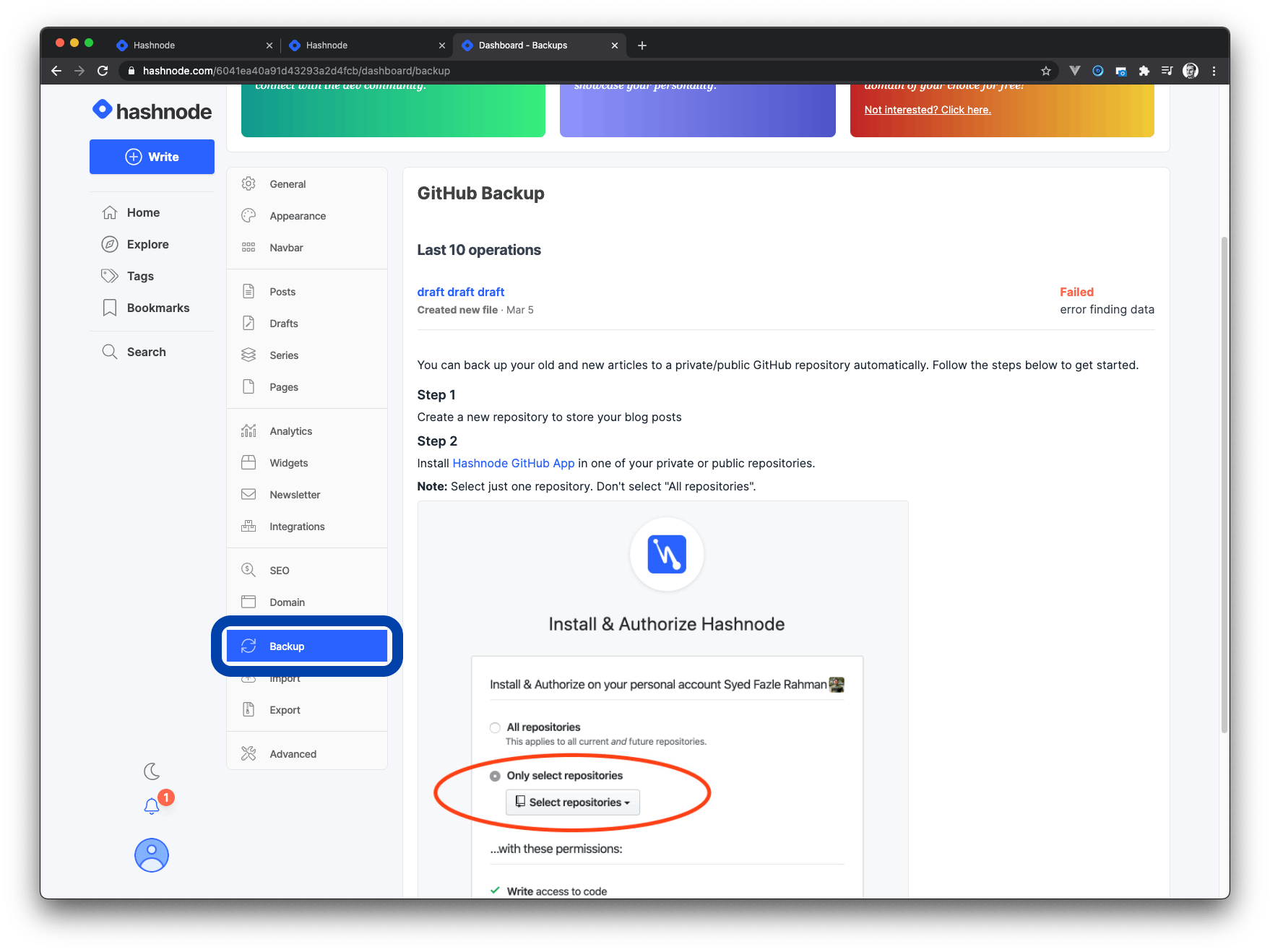
Photo by Markus Winkler on Unsplash
How to Save Your Hashnode Articles to GitHub
Hashnode makes it easy to backup your posts to GitHub
Hashnode is Great But Protecting Your Stuff is Important
Hashnode is my favorite blogging platform. I enjoy the slick interface, developer focus, custom domain names, and outside integrations.
Perhaps the best feature of Hashnode is the markdown editor. It makes writing stories a breeze. You can even use Hashnode as a full-stack solution and store your articles there.
However, as much as I enjoy Hashnode, it could fold one day. Or they could be hacked, or their servers could flood, or catch on fire, or... I think you get the point. Hosting all your content on Hashnode is a dangerous proposition.
Thankfully, owning the writing you produce is a crucial feature of Hashnode. The service makes it easy to connect to GitHub for automatic backups. They even recently released a new feature that makes it super easy to backup all your old content to GitHub. Having a backup means that in the off chance something happens to Hashnode, you have the resources to recover.
How to Setup Github Backups
- First, you will need to create a new repository on GitHub. You can title the repo whatever you'd like.
- Head over to your blog's dashboard.
- Locate the Backup backup button on the side panel.
- Click on the install Hashnode GitHub App link.

- Provide the app permission to access only select repositories. Then select the repository you created in step one.

- Hashnode will now automatically backup your articles upon publishing. You can also click Back up all my posts to backup old posts.

That's it! You now have all your old posts saved to GitHub. What happens if GitHub goes down? That's too scary a possibility to consider.
